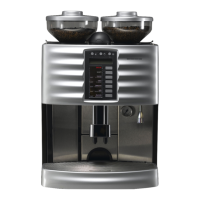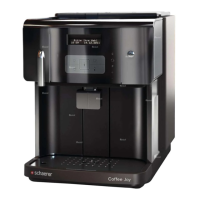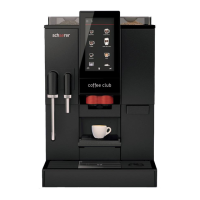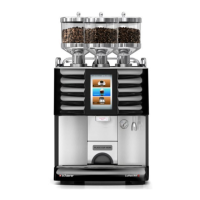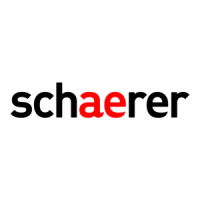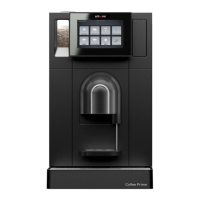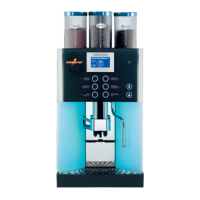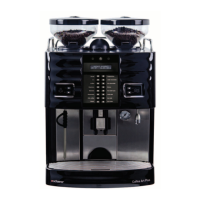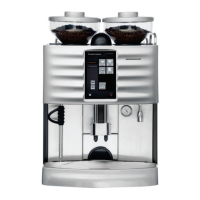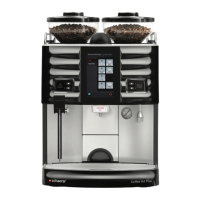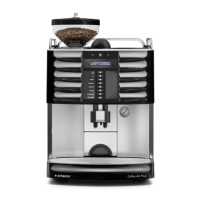www.schaerer.com Installation and commissioning
BA SCV_EN
V05 | 04.2013
16
DANGER!
Risk of electrocution!
Danger of electric shock!
It is essential that you comply with the following instructions:
• The phase must be fused at the ampere value specified on the serial plate.
• It must be possible to disconnect the device from the mains power supply at all poles.
• Never operate a device with a damaged power cord. Have a defective power cord or plug
replaced immediately by a qualified service technician.
• Schaerer AG recommends against using an extension cable. If, despite this, an extension
cable is used (minimum cross-section: 1.5 mm²), observe the manufacturer data for the
cable (operating instructions) and the locally applicable regulations.
• Route the power cord in such a way that it does not present a tripping hazard. Do not pull
the cord over corners or sharp edges, pinch it between objects or allow it to hang loosely
in the open. Do not position the cord over hot objects, and protect the cord from exposure
to oil and aggressive cleaning products.
• Never lift or pull the device by the power cord. Never pull the plug out of the socket by its
cord. Never touch the power cord or plug with wet hands. Never insert a wet plug into a
power socket.
Power requirements
Water connection/draining
Conditions
CAUTION!
Risk of machine
damage!
The machine can suffer damage due to bad material and wrong water values.
It is imperative that the following points are complied with:
• The water must be free of contaminants and the chlorine content must not exceed 100 mg
per litre.
• Do not connect the machine to pure reverse osmosis water or other aggressive types of
water.
• The carbonate hardness must not exceed 5 – 6°dKH (German carbonate hardness) or 8
– 10°fKH (French carbonate hardness) and the total hardness value must always be great-
er than the carbonate hardness.
• The minimum carbonate hardness is 4°dKH or 7°fKH. The pH value must be between 6.5
and 7
• Always use the new hose set (fresh water/waste water hose) provided with the machine.
The water supply connection must be made in accordance with the applicable requirements
and the regulations of the respective country. If the machine is connected to a newly installed
water pipe, the pipe and infeed hose must be rinsed well to ensure that no dirt gets into the
machine.
The coffee machine must be connected to an installed drinking water line with a shut-off valve.
Installation takes place via the installed pressure hose and the 3/8”-threaded union piece onto
the pressure reducer that is mounted on the water tap (set to 0.3 MPa (3 bar)).
If the machine is connected to a drain, the included temperature-resistant drain hose must be
connected to the drip tray and the siphon. It must be firmly attached to the drain and slanted
at a downward angle (so that the water can flow downward).
Mains Power requirements
Fuse protec-
tion (site
face)
Connecting
cable con-
ductor
cross-sec-
tion
1L, N, PE: 220 – 240 V CA 50/60 Hz 2000 – 2200 W 10 – 16 A 3 x 1.0 mm²
1L, N, PE: 100 – 120 V CA 50/60 Hz 1800 – 2100 W 20 A 3 x 14 AWG
2L, PE: 200 – 220 V CA 50/60 Hz 1700 – 1900 W 2x15 A 3 x 1 mm²
2L, PE: 200 – 220 V CA 50/60 Hz 2600 – 3200 W 2x15 A 3 x 1.5 mm²
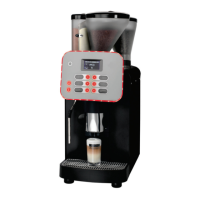
